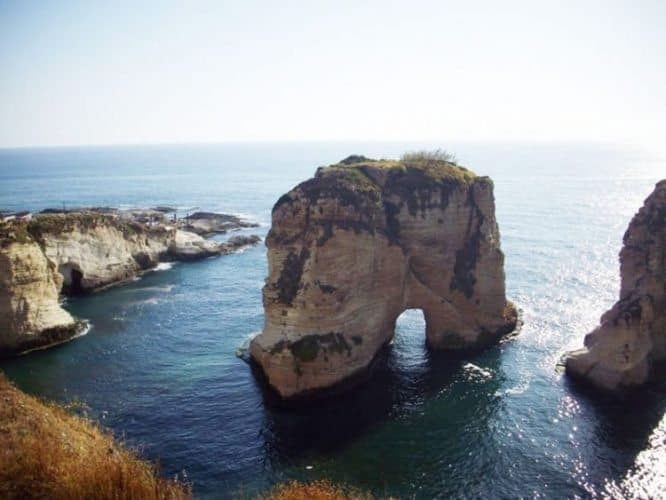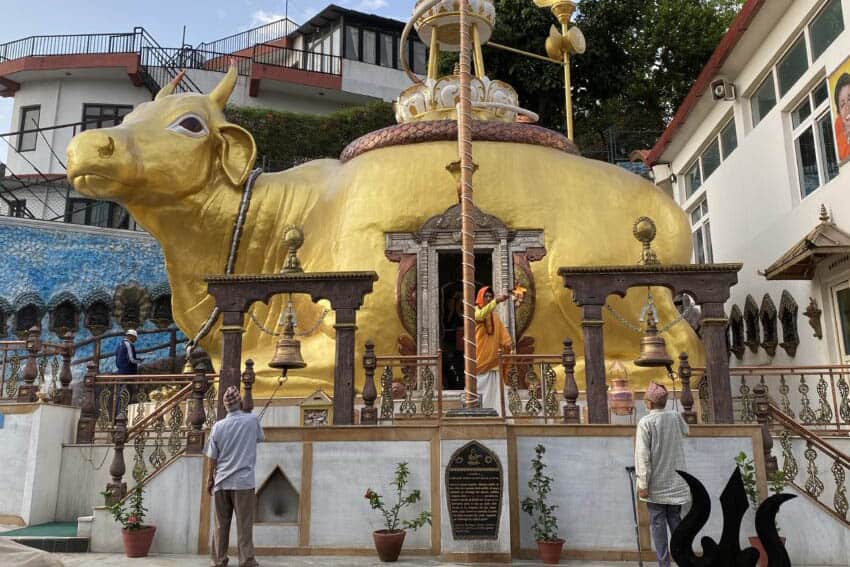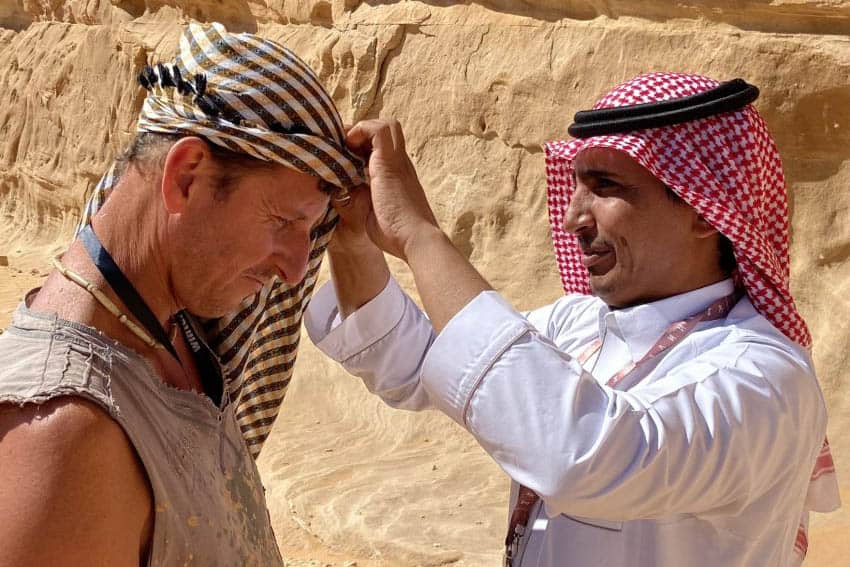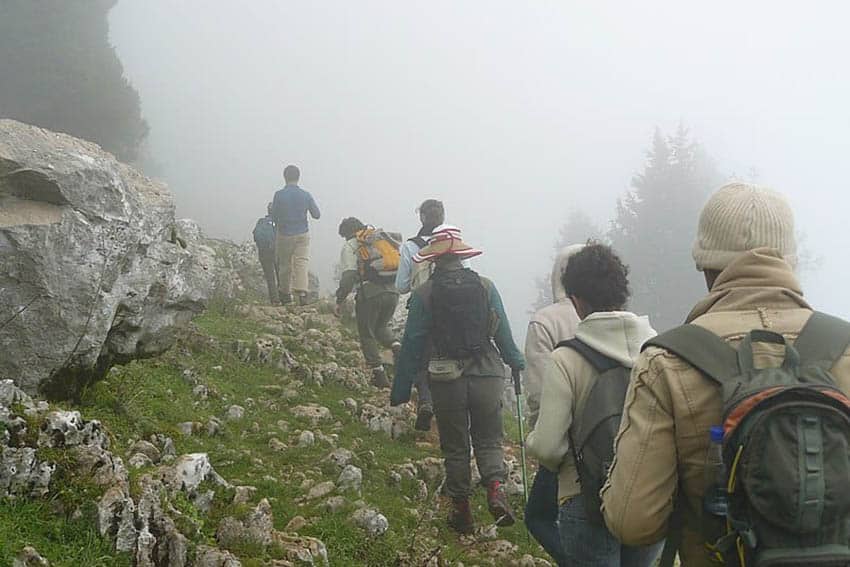
Lebanon on the Rise
By Inka Piegsa-Quischotte
Editor’s Note: In 2020, Beirut suffered 215 deaths and thousands of injuries after a mysterious bombing at the city’s port. Two years later nobody yet knows what happened, but the city has moved on and hopes for better days.
When I told my friends that I was going for a few days to Beirut and Lebanon I had to listen to comments ranging from: “What? On your own? Are you crazy?” to “You better pack your tin hat and bulletproof vest.”
It’s about time to finish with preconceived and outdated ideas about the country. For starters: I didn’t get mugged, I didn’t get abducted and I didn’t get shot at either, because otherwise, I wouldn’t be here writing these lines.
On the contrary, I found extremely friendly people. I mean, where else in the world does an immigration officer actually smile at you, at 2 o’clock in the morning at that? The reason behind this is simple: Lebanon needs $$$$, plenty of them, and whoever looks as if they have a few to leave behind is more than welcome, provided they do not have an Israeli entry visa in their passport.
The taxi took me from the airport to my hotel in the center of town, to Hamra Street, to be exact. The first thing I noticed were huge billboards everywhere with exactly the slogan which is the title of this article.
After a few hours of sleep, I went out exploring.
What to Do and See in Beirut
Everybody who is familiar with Beirut knows Hamra Street. It used to be the most lively street for shopping, eating, dancing, and strolling about. It still is the shortest way to Manara, the beaches, the seafront and the famous Corniche, but it’s a bit run down. A completely renovated and very elegant district has sprung up Downtown around Serail.
There is hardly an international designer who does not have a shop in the newly build souks [markets] and the surrounding buildings contain beautiful apartments and offices.

The whole area is extremely clean, the pavements are even, and I got the impression as if half of the city had recently been dipped in a huge pot of yellow, pink, and beige paint.
Of course, particularly towards the waterfront, there are still burned-out and half-destroyed buildings with bullet and mortar holes in the walls and no windows which bear witness to 15 years of civil war.
On the other hand, construction is underway everywhere and apartment block after apartment block is springing up all along the Corniche [seaside boulevard] and beyond.
A famous sight you should not miss is the curious rock formation of Pigeon Rocks just off the Corniche. If possible wait until sunset and watch the sun go down through the arches in the rock.
The only remnants of antiquity are the well-excavated and restored Roman Baths in the middle of downtown. Beirut also has three important museums: the Sursock Museum, the National Museum, and the Muawad Museum.

I didn’t visit these museums on this trip because I only had two full days and preferred to use the time for trips to more spectacular sights like the Jeita Grotto, Byblos, and Baalbek.
No visit to Beirut is complete without some clubbing in Gemmayze. You find an incredible variety of clubs and restaurants, many of them on the rooftops with spectacular views over the sea and the port of Beirut, not to mention wonderful food and music reaching from jazz to belly dancing to rock and pop, something for every taste.
The best clubs don’t even open before midnight and the entertainment is going on until the sun comes up again. You hear a variety of languages which proves the slogan right: the world is definitely Beirut-ing again!
Harissa and Jeita Grotto

After a morning in Beirut, I used the rest of the day for a trip north, to the statue of Our Lady of Lebanon and further on to the Jeita Grotto. Both are in the same direction at a distance of 18 and 20 km from Beirut.
I hired a taxi and driver, which is the best way to get around. A full day (8 hours) costs $120 and you have the advantage that you can really look and stop where ever you want.
Our Lady of Lebanon is a famous Lebanese pilgrimage place, high up on a mountain overlooking Beirut. The virgin is a 15-ton bronze statue painted white with outstretched hands.
Access up the mountain is by cable car, called ‘teleferique.’ It’s very, very steep and leads very close to people’s windows, which is actually quite funny.
You get out and walk around or climb up to the top of the statue. A brand new, big and extremely modern Maronite cathedral entirely made of steel, cement and glass has been constructed near the virgin. Whether you like it is a question of personal taste.
Back down again, my driver Kamal (who had a fear of heights) was waiting and we continued on to the Jeita Grotto. If I only had time to see one sight I would always choose this marvel of nature.

The grotto is huge and the stalactites and stalagmites which have been formed by slowly dripping water over thousands of years wind up and down in patterns and formations no human artist could ever invent or reproduce.
You take a little cable car to the upper grotto, because there are two. Admission is $18 and the fee gives you access to the entire complex.
Paths lead along and around and you hear nothing but the dripping water as awe makes people whisper or shut up totally.
Photography is strictly forbidden and you have in fact to lock your camera up in a storage box.
The Jeita grotto is competing to be recognized as one of the seven wonders of nature of the world and I hope they make it.
After you have seen the upper grotto, you go back and take a boat trip in the lower grotto. Sometimes, in winter, the lower grotto is closed, because the water level is too high and the flatboat cannot pass below the arches formed by nature. The water is crystal clear and very cold.

Outside are two interesting sculptures: the ‘Time Man’ carved out of stone and the bronze and wood ‘Wheel of Time,’ both symbolizing eternity and the creations formed by time.
An absolutely unforgettable experience and awesome sight.
Byblos and Baalbeck
The next day I hired the same taxi again and we went further a field. Again, north to the ancient coastal town of Byblos and on to the temple complex of Baalbeck. Baalbeck is about 80 km from Beirut and as there is so much to see you really need the entire day.
They say in Lebanon that Beirut is known as the Paris of the East, so Byblos is like Cannes. People come there to enjoy the beach and the quaint little street bazaars, the numerous restaurants, and, of course, to admire the ruins and remnants of on of the oldest cities in the world.

The crowning glory in the respect however is Baalbeck. The drive alone is fascinating as it takes you up over the mountains several of which are snow-covered with views into deep ravines and canyons and rivers rushing through them.
And everything is green, green and more green because you are driving along the fertile Bekaa valley.
The history of the immense temple complex of Baalbeck, once known as Heliopolis, goes back 9000 years. From the Phoenician sanctuary to Baal to the Jupiter temple of Roman times, traces of the past are everywhere and it’s just so huge.
Every summer an international festival takes place in July/August. For details consult: baalbeck.org.lb,
After wandering around, I entered the museum close to the exit where statues recovered from the site are exhibited in mysterious semi-darkness.

Back outside, don’t forget to go to a small restaurant which announces ‘Baalbeck Pizza.’ The local speciality has nothing to do with pizza; it’s small folded parcels of baked dough filled with the most delicious minced meat and liberally sprinkled with lemon juice.
Useful information
Visa requirements depend on what passport you have, but most nationalities get an entry visa stamped into their passport on arrival and free of charge.
The local currency is Lebanese Pounds (LL) but $$ are accepted everywhere, so there is no real need to change money.
English and French are spoken widely, in fact, more English than French.
Many sights and museums (among them the Jeita Grotto) are closed on Mondays.
Guided tours are also available, ranging from $35 to $75 for half or full day tours.
I found it useful to consult with an arranger through the concierge of my hotel (Plaza Hotel, Hamra Street).
- Cruising by Yacht to Indonesia’s Raja Ampat - April 2, 2019
- Bursa, Turkey – Travel Inspired by Two Famous Puppets - September 29, 2016
- Poland: Castles & a Gold Rush in Lower Selisia - May 30, 2016





